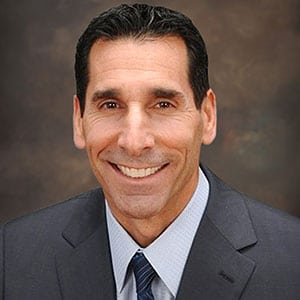About 70% of U.S. adults use one or more social media sites, according to Pew Research Center. They’re seeking product reviews, following key influencers, sharing their buying experience and even making purchases directly from social networks like Facebook and Instagram.
Savvy merchants are tapping into consumers’ enthusiasm by pursuing social commerce. In fact, nearly 40% of business owners are using social media to generate sales, according to a recent Forbes article.
Social commerce is particularly critical for digitally native vertical brands. DNVBs, with their web-centric business model and maniacal focus on the customer experience, are particularly invested in fostering a loyal and engaged social community.
Subscription box companies also make social media and social commerce a priority. Many companies strive to make the receipt of monthly deliveries a major social event for subscribers. Recipients often post photos or videos of the un-boxing experience. Social influencers and bloggers play a significant role in shaping buyer behavior.
Social-Friendly Order Fulfillment
In order to meet or exceed expectations for this social-minded audience, merchants must make sure that they are at the top of their game when it comes to order fulfillment. Following are a number of best practices that many successful merchants are implementing in social commerce fulfillment.
Facilitate Research Process to Fast-Track Buying Decisions
More than 40% of digital consumers use social networks to research new brands or products, making the channel second only to search engines, according to GlobalWebIndex’s 2018 Flagship Report.
To make it easy for consumers to research their purchases, merchants not only must provide detailed product information, reviews and chatbots, but they also must let consumers know if and when the products they’re interested in will be available. Shoppers not only want to be able to check item availability but also need visibility into actual inventory levels. Inventory management is key.
A robust order management system has become a virtual necessity for today’s merchants. An OMS lets them see enterprise-wide inventory (fulfillment centers, drop ship vendors, in transit and available to promise). If the desired product is not in stock at the FC closest to the consumer, the system can readily identify alternative fulfillment sources.
With this visibility, merchants can share detailed real-time information with customers, including product availability and backorder status. This helps not only with the customers’ research process but also with managing their expectations for improved service.
Meet Customer Expectations for Timely Deliveries
Failure to provide quick, consistent and cost-effective deliveries has become a deal breaker for even the most loyal customers, thanks in large part to the so-called “Amazon effect.” An overwhelming 91% of shoppers will abandon an online merchant if shipping isn’t free or fast enough, according to Pitney Bowes. With free, two-day shipping viewed as the industry standard – and soon to be one-day thanks again to Amazon – merchants are feeling the heat.
The timing of deliveries is also critical for subscription companies. They often synchronize monthly shipments so that subscribers across the country receive their products – and share the experience on social media – at approximately the same time. Careful coordination is required to time shipments within a narrow delivery window.
For optimal efficiency, the aforementioned OMS provides intelligent order routing, pulling inventory from the best fulfillment source to ensure the desired service level at the lowest cost.
With an eye on the clock, merchants also are expanding their use of automation, from wearable RF technology and robots to pick-to-light and automated label application/manifesting. Incorporating fulfillment automation and material handling solutions helps speed order turnaround and delivery times.
In addition, merchants are finding that utilizing multiple, strategically located distribution centers can help to position inventory closer to the consumer to reduce transit time and cost. With two or more DCs, they can reach 90% of consumers using two-day ground service, Saddle Creek research shows.
Ensure a Share-Worthy Customer Experience
In order to stand out in a crowded marketplace, merchants must routinely delight their customers. That starts with the basics, such as consistently accurate shipments of quality products. A strategic fulfillment solution, utilizing proven processes and effective quality management methodologies such as Lean/Six Sigma can help to cover the bases here.
Shoppers want to be able to move from their laptop to their phone to their Instagram account with ease and expect the same customer experience regardless of the platform. In their minds, the fact that the endorsement of a popular influencer has caused an overwhelming spike in order volume should have no bearing on the availability of their favorite product.
To provide seamless, responsive service, merchants are investing in a variety of resources, from OMS to scalable space and staffing that can accommodate sudden volume surges.
Good presentation also is key, and eye-catching packaging contributes to a positive experience. In fact, over 20% of consumers say packaging quality is a top reason when they’re deciding where to shop, according to Pitney Bowes.
Personalization can be another strong differentiator. From custom engraving to curated subscription boxes, merchants are finding creative ways to make the customer experience memorable and worthy of that pure gold social sharing.
Moving value-added services like these close to the customer helps merchants to react more quickly to their demands.
Many merchants look to fulfillment partners for help in implementing fulfillment strategies to support these initiatives. 3PLs are well positioned to provide the scalable resources, sophisticated technology, value-added capabilities and quality management programs necessary for social commerce success.
With an estimated 246.7 million social media users and counting, there’s no time like the present for merchants to develop your social commerce fulfillment strategy.
Perry Belcastro is SVP of fulfillment for Saddle Creek Logistics Services
